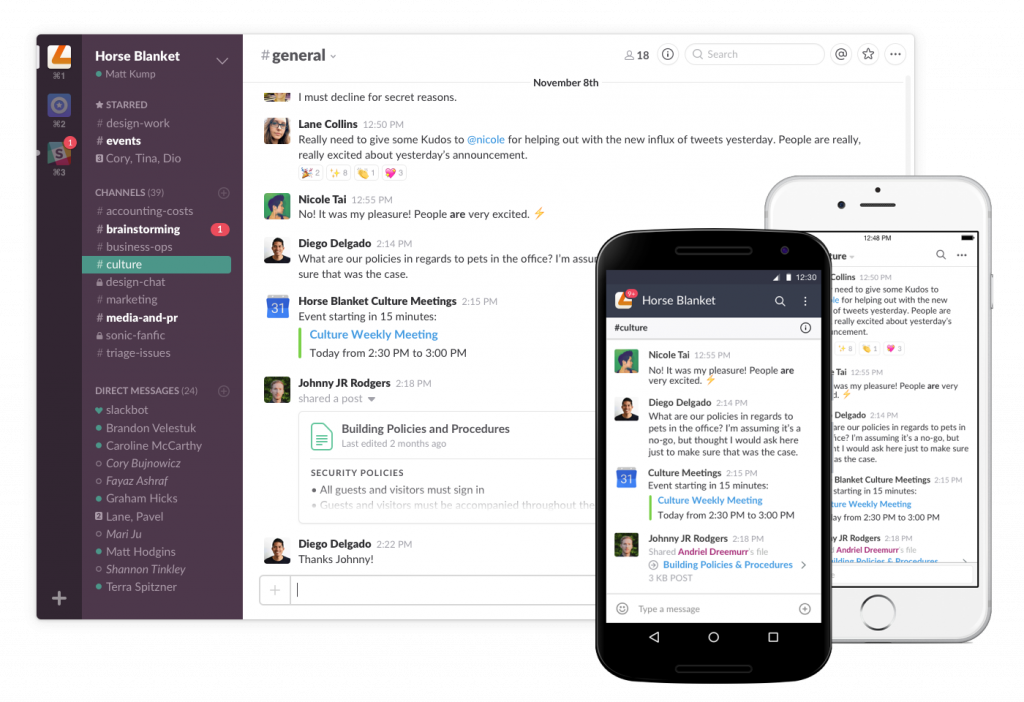Twenty-seven Instagrams. That’s what Salesforce paid for Slack, the upstart messaging app that has become a market leader in its rapidly growing category.
Actually, nearly 28 Instagrams, given the $27.7bn price tag.
It’s a phenomenal success story for a company that started out making computer games. The game was called, ironically, Glitch; while Slack was originally the in-house messaging tool for the company that made it, called Tiny Speck. It has raised about $15bn but the game, launched in September 2011, bombed.
However, that messaging app proved to be the real star of the show and Slack was launched in 2013.
Named at one point “the fastest growing startup,” Slack hit a $1-billion valuation after only eight months, without any traditional advertising or hiring the de rigour chief marketing officer.
But it’s also a matter of who the Tiny Speck / Slack cofounder was: Stewart Butterfield. He was also cofounder a company considered to be one of the original Web 2.0 pioneers, photo-sharing site Flickr. After selling it for an estimated $25m in 2004, Butterfield went back to the thing he loved: making games. It was a game – called Game Neverending – that was the origin of Flickr, which Butterfield and some Flickr friends tried to resurrect at Glitch.
Now, Slack, which stands for “Searchable Log of All Communication and Knowledge”, is the de facto communication tool for a new generation of workers. As much as email was the default communication tool of the baby boomers, as it replaced hand-written letters of an earlier era, Slack is now the default work tool for the millennial generation. It is beloved by the tech industry, the media industry and small businesses everywhere. Like so many other software-as-a-service (SaaS) companies, it has capitalised on the lockdown-caused work-from-home phenomenon.
Slack combines the ease of messaging, with its multiple channels, the private messaging and the clever integrations with other services like Google Drive and Trello. Some companies have foresworn email for Slack, making that their primary internal messaging system. Try work in Silicon Valley without being a Slack ace user…
“Stewart and his team have built one of the most beloved platforms in enterprise software history, with an incredible ecosystem around it,” gushed Salesforce CEO Marc Benioff. “This is a match made in heaven.”
Butterfield, who will continue to run Slack as a separate business unit, responded: “Salesforce started the cloud revolution, and two decades later, we are still tapping into all the possibilities it offers to transform the way we work. The opportunity we see together is massive. Personally, I believe this is the most strategic combination in the history of software, and I can’t wait to get going.”
There’s a lot of love there, and Slack’s loyal users will be hoping the software bromance stays this positive. Big software integrations have notoriously come unstuck, ending in withering failures. Just ask the long-departed founders of WhatsApp and Instagram how their vision continues to play out after they were acquired by Facebook. Or Yahoo whose 2013 $1.1-billion purchase of Tumblr ended in disaster within two years, causing a $712 million write off.
As part of Salesforce’s purchase announcement, it revealed Slack has over 142,000 paying customers on top of its already known 12-million daily active users.
Salesforce is no doubt buying the chat app for its dedicated userbase but also its sexy interface, which will become the interface for Salesforce Customer 360 software.
Microsoft’s powerful cloud-based business tools have always been a key rival for Salesforce, especially its Microsoft Teams, which with its 115 million daily active users and is cleverly integrated with Office and all the other enterprise apps in Azure.
Slack offers Salesforce an extra edge in that battle, the cool, sexy messaging app that is effectively the Xerox of its category. I think it’s an ideal mix. Salesforce may be huge now, but it was also once a scrappy upstart. Slack isn’t a giant yet, but it sure is headed that way. They make a nice couple. It will be interesting to see where this goes.
This article first appeared in the Daily Maverick.




